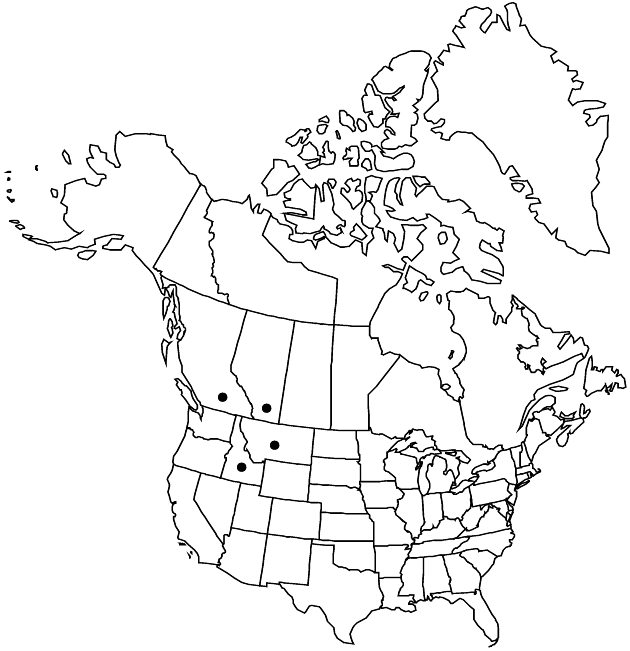Prenanthes sagittata
in J. M. Coulter and A. Nelson, New Man. Bot. Centr. Rocky Mt., 592. 1909.
Plants 8–75 cm; taproots short, thick and tuberous or long and slender, fascicled. Stems erect, greenish and mottled purplish, ± glabrous or proximally glabrate, distally glabrous. Leaves: proximal present at flowering; petiolate (petioles narrowly winged, sometimes lobed, 5–15 cm); blades ovate or deltate, 3–10 × 1.5–6 cm, thin, bases hastate to truncate or rounded, sometimes shallowly, palmately lobed, ultimate margins irregularly dentate, faces glabrous; distal reduced. Heads in narrow, elongate paniculiform or racemiform arrays. Calyculi 5–7, green, subulate to narrowly lanceolate bractlets 3–8 mm (longest 2/3 lengths of phyllaries), glabrous. Involucres narrowly campanulate (rounded), 7–13 × 5–8 mm. Phyllaries 7–12, green to tan, apices dark, linear-lanceolate, 8–12 mm, margins narrowly scarious, (apices sparsely ciliate), faces glabrous. Florets 10–19; corollas white, 9–15 mm. Cypselae brown, fusiform to oblanceoloid, subterete or angled, 5 mm, indistinctly 7–10-ribbed; pappi pale yellow, 5–6 mm. 2n = 16.
Phenology: Flowering Jul–Aug.
Habitat: Stream banks, terraces, moist shady places, talus, rock crevices, mixed conifer woodlands
Elevation: 1000–1600 m
Distribution

Alta., B.C., Idaho, Mont.
Discussion
Prenanthes sagittata is similar to P. alata; it differs in its somewhat smaller stature, heads in narrower and more elongate arrays, and longer calyculi. The ranges of the two species do not overlap.
Selected References
None.